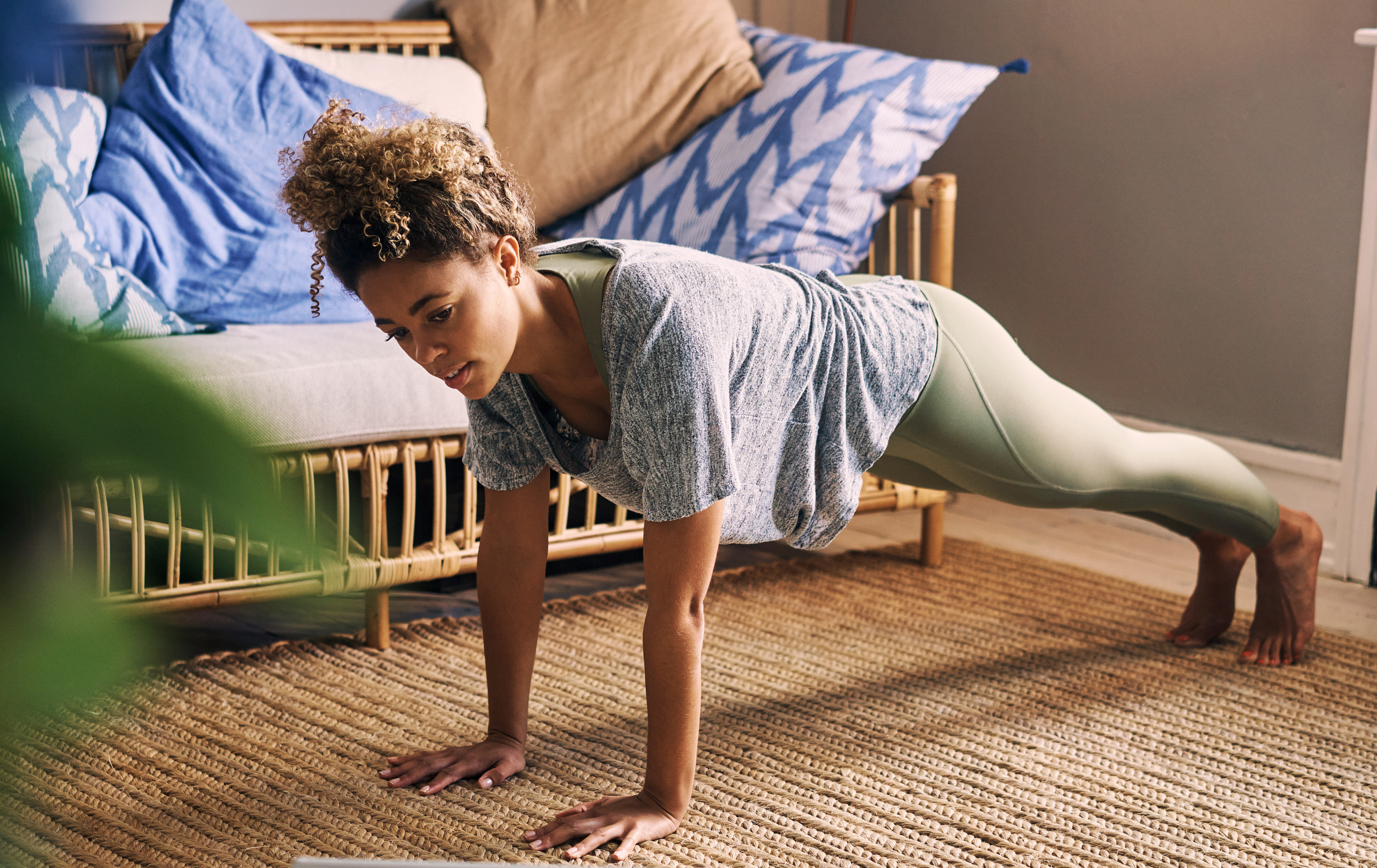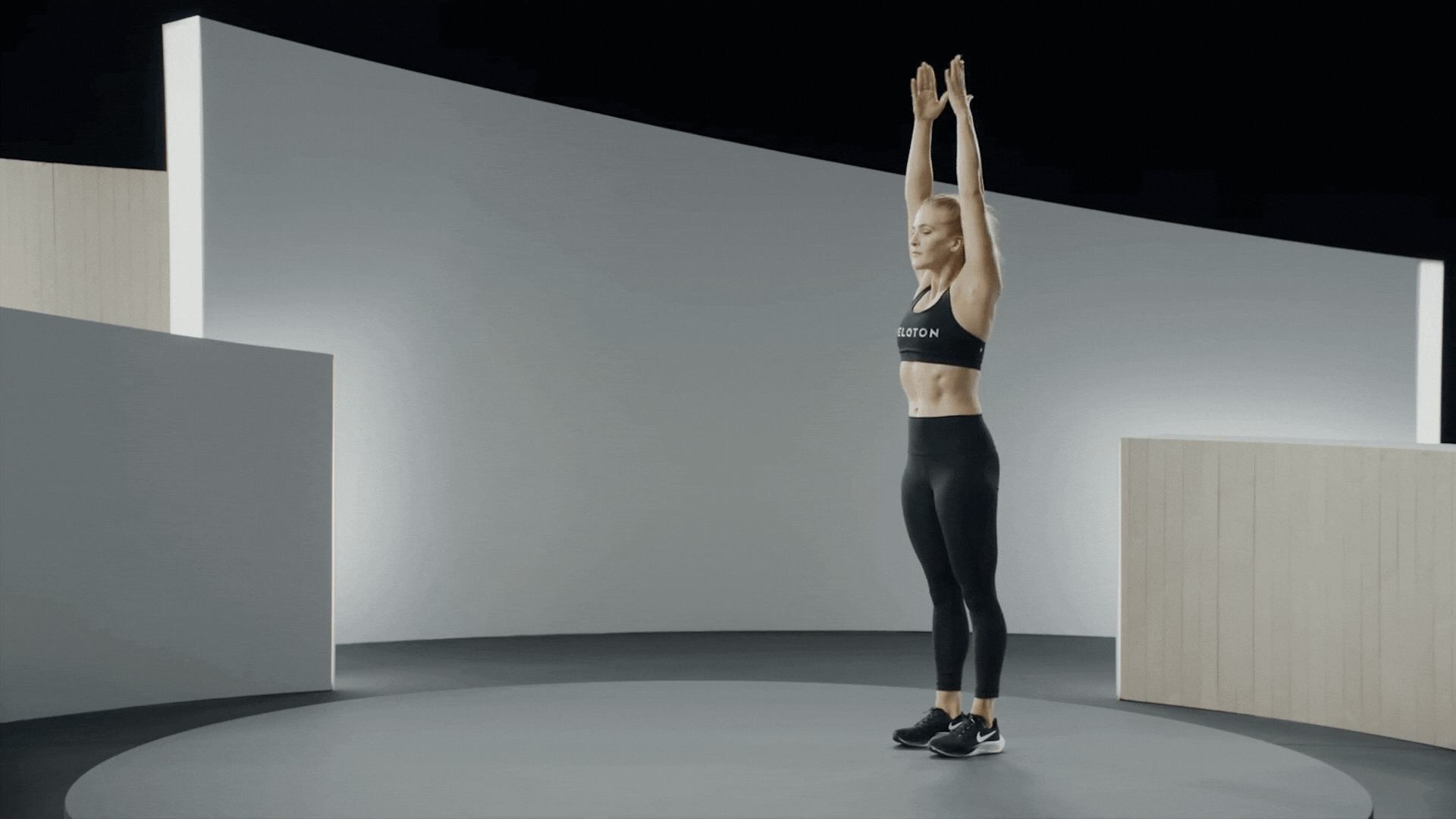
pixdeluxe/E+ via Getty Images
Why the Inchworm Exercise Is So Much More Than a Warm-Up Movement
The experts break it down.
By Karla Walsh•
What Is the Inchworm Exercise?
What Muscles Does the Inchworm Work?
4 Benefits of the Inchworm Exercise
How to Do the Inchworm
How to Add the Inchworm Exercise to Your Workout Routine
Common Mistakes to Avoid When Doing Inchworms
It’s much more than just a warm-up movement. The inchworm exercise strengthens and stretches your muscles, improves your joint mobility, and boosts your heart rate. Plus, it doesn’t require any equipment.
Here, we break down everything you need to know about the inchworm exercise, including what it is, why, when, and how to do it, and common mistakes to avoid along the way.
What Is the Inchworm Exercise?
When performed correctly, you’re engaging a wide variety of muscles with this movement, says Casey DiZinno, a physical therapist at FYZICAL Therapy & Balance Centers Southington in Connecticut. “Inchworms are an active total-body exercise.”
What Muscles Does the Inchworm Work?
“Depending on your technique, there could be a shift within the focus of the muscles you target the most,” says Peloton instructor Rad Lopez. For example, if you start this movement with a hinge, you’ll see more engagement in your hamstrings, while beginning the exercise with a squat will fire up your quads, he adds.
In general, you’ll work the following muscles in this exercise:
Shoulders
Chest
Triceps
Biceps
Core
Hips
Glutes
Quadriceps
Calves
Heart
4 Benefits of the Inchworm Exercise
Besides targeting those specific muscle groups, the inchworm is a favorite among physical therapists, trainers, and athletes because it:
1. Improves Your Mobility
“My favorite thing about the inchworm is that it is a multi-joint exercise. It allows us to work on, strengthen, and maintain our mobility,” Rad says. Having good mobility is essential for healthy aging, enabling you to continue to climb stairs, move from a seated to a standing position (and vice versa), and reach for objects on the floor.
2. Helps Increase Your Circulation
Stretching exercises, such as the inchworm, help increase blood flow and oxygen to your muscles. Good circulation throughout your body is also crucial to maintaining a strong immune system and a sharp mind.
3. Bolsters Your Core Muscles
“This exercise challenges your core in different positions,” DiZinnos says. “As humans, we are constantly in motion, and if we learn how to appropriately engage our core in different planes, we’re less likely to experience lower back pain.”
4. Strengthens and Stretches Your Muscles
As part of a dynamic warm-up routine, inchworms stretch the muscles along your posterior chain (the back side of your body) and strengthen your anterior chain (the front side of your body), DiZinno says. “When performed correctly, almost all of your muscle groups are engaged in some way,” he adds.

How to Do the Inchworm
Stand with your feet shoulder-width distance apart. Maintain a slight bend in your knees. Engage your core.
Take a deep breath in. As you exhale, hinge at your hips and reach your hands about six to 12 inches in front of your toes.
Alternate walking your hands forward until they’re positioned directly under your shoulders. Keep your breath even and controlled. You should be in a plank position.
Pause here. Keep a neutral spine. Continue to engage your core.
Reverse the movement: Alternate walking your hands back toward your feet. If your hamstrings feel tight, bend your knees.
With your core engaged and knees slightly bent, hinge at your hips to return to a standing position.
To make inchworms easier, start by just practicing the first portion of the movement to focus on nailing your hip hinge. Plank holds can also help you become comfortable keeping your body in a straight line from shoulders to heels. (Bracing your core is key so that your hips don’t pike or dip.) From here, work up to stringing these patterns together with the hand-walk motion in between.
If you find yourself lacking flexibility on a given day (or in general), DiZinno suggests bending your knees even more on the initial lowering and on the way back up to reduce the stress on your hamstrings. Imagine going from standing to squatting to walking out into plank, then reversing that flow.
To make inchworms harder, tack on bonus strength exercises. Consider one of these variations:
Complete five bodyweight squats before walking your hands out into the plank
Do one to five push-ups while in the plank position
Perform 10 alternating shoulder taps while in the plank position
Do 10 alternating mountain climbers while in the plank position
Hold the plank position for 30 seconds

Peloton App
Access thousands of classes with no equipment needed.
How to Add the Inchworm Exercise to Your Workout Routine
You can add this movement to your core workout or warm-up routine. Completing this exercise before a strength or cardio workout will help prepare your muscles for the work to come. It also may help ready you for the day ahead after an early wake-up. “Usually, I love doing inchworms in the morning to warm up my whole body and get the joints moving as fluidly,” Rad says. “It’s a great way to wake the body up.”
The ideal number of sets and reps depends on when, why, and who is performing the inchworm exercise, DiZinno says. However, a great starting place for a beginner is one to two sets of five to 10 reps done at a slow and controlled pace.
Common Mistakes to Avoid When Doing Inchworms
The biggest inchworm mistakes our experts see is people rushing through the movement. Remember: It’s not a race. “Take your time and try to be methodical and mindful as you move through the inchworm,” Rad says. “Connect [your] mind and body throughout this movement.”
Here are a few more common mistakes to avoid, according to DiZinno:
Avoid collapsing or “snaking” your back.
Make sure you’re not excessively extending or flexing your neck. Try to keep it neutral.
Steer clear of using momentum with the hip hinge. Rushing and swinging through the move means that your muscles will not fully engage, DiZinno says. Focus on maintaining control.
It’s easy to overlook your ab muscles in this movement, but aim to maintain core engagement through the duration of the exercise. “Imagine putting on a pair of tight jeans, and try to bring your belly button closer to your spine,” DiZinno says.
If you’re unsure about your form, record a video of yourself doing a few reps, then watch it back and adjust accordingly. “If you experience pain, stop and speak to your doctor or a physical therapist,” DiZinno says. Inchworms are relatively low risk as long as you are performing it appropriately.”
This content is for informational and educational purposes only and does not constitute individualized advice. It is not intended to replace professional medical evaluation, diagnosis, or treatment. Seek the advice of your physician for questions you may have regarding your health or a medical condition. If you are having a medical emergency, call your physician or 911 immediately.
Level up your inbox.
Subscribe for a weekly dose of fitness, plus the latest promos, launches, and events.
By providing your email address, you agree to receive marketing communications from Peloton.
For more about how we use your information, see our Privacy Policy.





